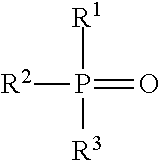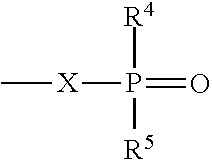Production of hydroxy ether hydrocarbons by vapor phase hydrogenolysis of cyclic acetals and ketals
a technology of cyclic acetals and ketals, which is applied in the preparation of ethers, organic compounds, organic chemistry, etc., can solve the problems of removing a ready source of on-site eo for the production of e-series products, ethylene oxide and propylene oxide are hazardous materials, and the selectivity of 2-alkoxy-1-ethanol or 3-alkoxy-1-propanol type products is increased, and the reaction reaction efficiency is high
- Summary
- Abstract
- Description
- Claims
- Application Information
AI Technical Summary
Benefits of technology
Problems solved by technology
Method used
Image
Examples
working examples
[0118]The liquid feed part of the hydrogenolysis unit consists of a 100 mm graduated burette feed tank for the acetal feed. This is connected to a flow programmable high pressure lab scale ball and check feed pump (Eldex ReciPro Optos Series Model 1). All equipment under pressure is constructed of 316 stainless steel tubing or fittings. The discharge of the pump leads to ⅛ inch diameter (3.2 mm) tubing that is connected to a fitting on the top of the reactor. This fitting is further connected to a ⅛ inch diameter (3.2 mm) tubing section that leads to a vaporization section prior to the catalyst bed. Hydrogen feed is supplied from high pressure cylinders of zero grade hydrogen via a high pressure regulator to a lab scale Brooks mass flow controller. Nitrogen feed, used for purging and other inert gas needs, is fed by a similar design from a high pressure cylinder via a gas regulator through another dedicated Brooks mass flow controller for inert gas flow. The discharges from these tw...
example 1
Vapor Phase Hydrogenolysis Using Degussa 0.5% Pd / Alumina
[0121]The liquid feed tank of the unit was filled with a cyclic acetal 2-n-propyl-1,3-dioxolane (PDX). The reactor had been charged with 20 cc (14.27 grams) of Degussa 0.5% Pd / 1 / 16″ alumina sphere catalyst. The hydrogen flow was set at 2960 sccm and the back pressure regulator was set to 300 psig (2068 kPa). The catalyst bed (skin) temperature target was set at 210 degrees Celsius (483 degrees K.). After reaching 210 degrees (483 degrees K.), the reactor was permitted to equilibrate at 210 degrees Celsius (483 degrees K.) for fifteen minutes. After that period, the PDX pump was started with a target feed rate of 0.12 ml / minute. Liquid product samples were collected hourly as was operating data. The samples were weighed and analyzed by gas chromatographic analysis on Agilent Technologies 6890 series machine having a thermal conductivity detector. The column used was a 30 m J & W 125-3232 DB-FFAP capillary column. A 6 minute hol...
example 2
[0125]The desired conversion of a cyclic acetal into a hydroxy ether hydrocarbon may be carried out in a vapor phase hydrogenolysis by a wide variety of palladium based catalysts. The highly selective catalysts are those which are not of high activity, that is, those which do not cause extremely high conversions of the cyclic acetal feed across the catalyst bed. Moderate activity catalysts, that is, those that yield a conversion of the cyclic acetal in the 20 to 85 percent range generally yield the best selectivity to the desired hydroxy ether hydrocarbon. Low activity catalysts, yielding conversions of the acetal below 10%, are not as desirable due to the inherent inefficiency of requiring a large amount of acetal recovery for recycle and in most cases also having a poor selectivity to the desired hydroxy ether hydrocarbon product based on converted cyclic acetal. The table below lists the results of several different palladium based catalysts for the conversion of PDX into 2-n-but...
PUM
| Property | Measurement | Unit |
|---|---|---|
| temperature | aaaaa | aaaaa |
| temperature | aaaaa | aaaaa |
| pressure | aaaaa | aaaaa |
Abstract
Description
Claims
Application Information
 Login to View More
Login to View More - R&D
- Intellectual Property
- Life Sciences
- Materials
- Tech Scout
- Unparalleled Data Quality
- Higher Quality Content
- 60% Fewer Hallucinations
Browse by: Latest US Patents, China's latest patents, Technical Efficacy Thesaurus, Application Domain, Technology Topic, Popular Technical Reports.
© 2025 PatSnap. All rights reserved.Legal|Privacy policy|Modern Slavery Act Transparency Statement|Sitemap|About US| Contact US: help@patsnap.com



